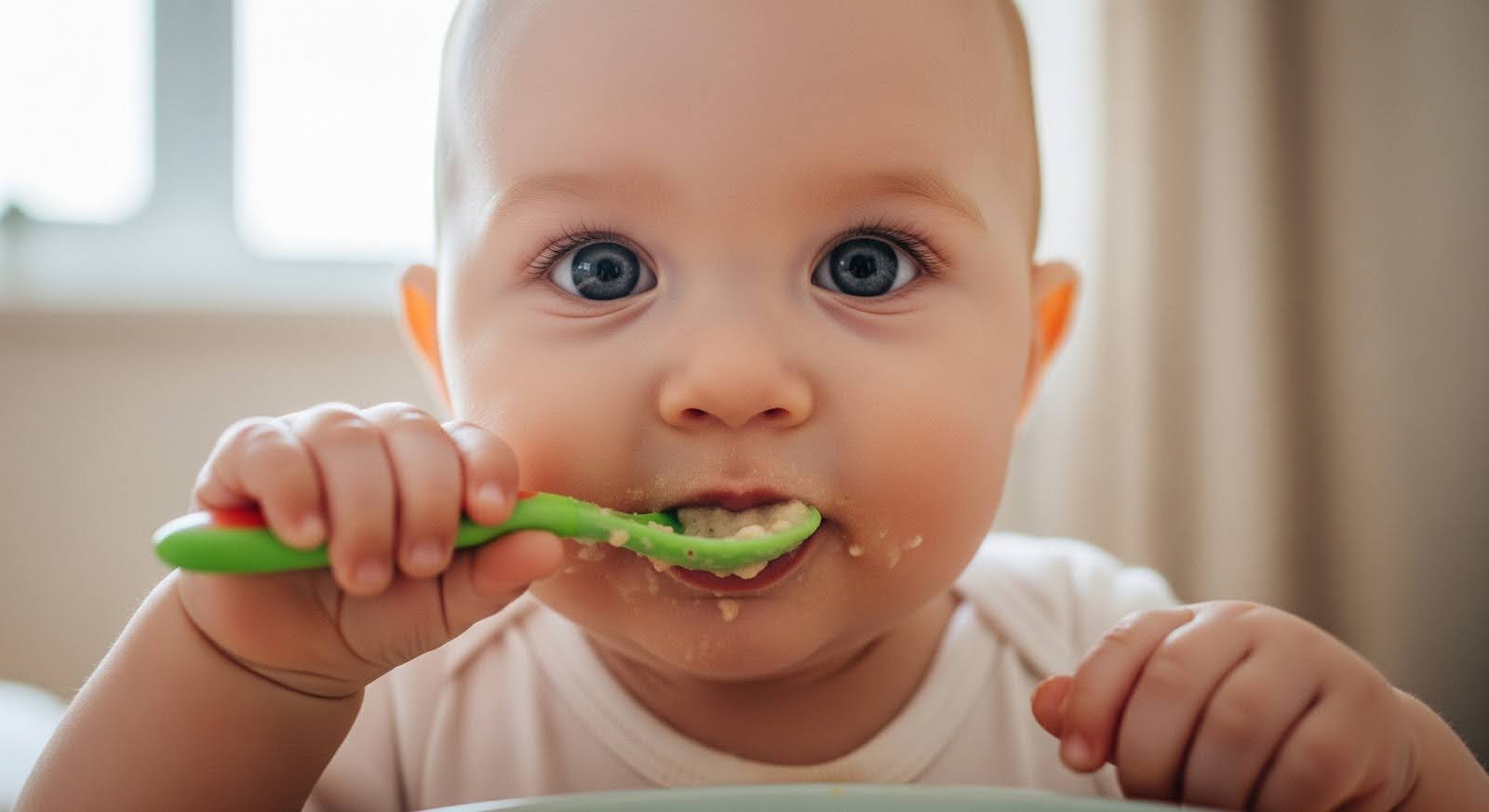Plain Porridge vs Purée – Which Is Better for Your Baby’s First Solids at 6 Months?

When your baby turns 6 months old, the big question many parents have is:
“Should I start with plain porridge or fruit and veggie purées?”
It’s a common dilemma for new parents stepping into the exciting stage of introducing solids. The truth? The answer depends on a few important factors.
Starting Solids: What Experts Say
According to the World Health Organization (WHO), complementary feeding can begin from 6 months old—provided your baby shows signs of readiness, such as being able to sit with support and showing interest in food.
Plain Porridge – Simple & Filling
Plain rice porridge (blended until smooth) is a go-to choice for many parents because:
- It’s soft and easy to digest
- It keeps baby full thanks to its carbohydrate content
- It allows parents to spot food allergies easily when introducing new ingredients one at a time
However, plain porridge alone is low in nutrients. That’s why it’s best to mix it with other healthy ingredients once your baby gets used to the texture.
Fruit & Veggie Purées – Packed with Nutrition & Flavor
Purées like pumpkin, carrot, potato, or apple can:
- Provide essential vitamins and minerals
- Introduce your baby to different natural flavors
- Supply fiber for healthy digestion
It’s best to start with one type of purée at a time and watch for any reactions for 2–3 days before introducing a new food.
So… Which One Is Better?
The short answer: Both can be good, as long as you introduce them the right way.
- Plain porridge is great for introducing texture and keeping your baby full.
- Purées are perfect for adding flavor and boosting nutrition.
Some parents start with purées for flavor, then introduce porridge gradually. The key is to avoid mixing too many ingredients at once in the early stages.
Tips for Parents When Starting Solids
- Use only natural ingredients – skip sugar, salt, or artificial seasonings
- Opt for steaming or boiling to retain nutrients
- Follow the 3-Day Rule – introduce one new food every 3 days to detect allergies early
- Prepare small portions and store in freezer-safe containers for convenience
Remember, every baby is different.
Some will happily gobble up their first spoonful, while others need time. At this stage, it’s less about quantity and more about exploring tastes, textures, and the act of eating. Be patient, keep trying, and your baby will eventually adapt.
Have your own tips or recipes for starting solids with your little one? Share them in the comments below. We’d love to hear from you!





